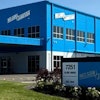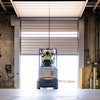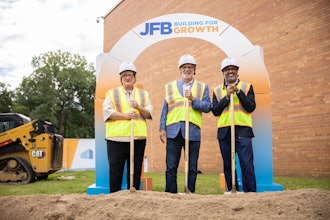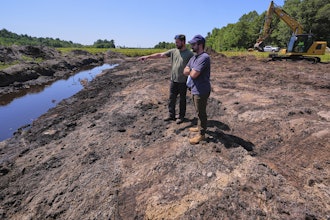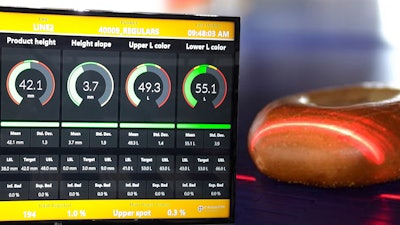
Every organization strives for its employees to share a common goal of continuous improvement. Of course, several factors may make this goal easier to conceptualize than achieve.
Technologies have come a long way in helping companies obtain information or data needed to quantify performance and identify areas for improvement. In particular, the baking industry has begun adapting new technologies to improve production control and manage final product consistency.
However, investing in high-tech production or quality assurance equipment is not always a quick plug & play “fix” for a particular need or process. In most cases, the investment only generates a return if the employees who interface with the equipment work together to ensure success.
Lessening the Divide Between Quality Control and Production Teams
Despite working together closely in a baking operation, quality control (QC) and production teams have different and, at times, contrasting performance metrics. The QC team's success depends on its ability to implement processes to ensure high product quality standards that meet consumer expectations. On the other hand, the production team’s focus is maintaining an efficient production process to create, package, and ship baked goods at the demanded volumes and timeframes.
Another aspect contributing to this divide is the subjectivity in the responsibilities of both QC and production teams. Most baking operations rely on manual inspection methods to assess product quality and consistency. Manual inspection methods are inherently operator dependent. This control becomes even more challenging when working with organizations with multiple production sites.
More baking companies have begun seeking ways to improve product quality and consistency without sacrificing efficiency and to help the organization address labor shortages, control ingredient costs, and more. As many have found, automated vision inspection technologies can solve several of these challenges—but only with careful implementation.
Automated Vision Inspection Provides a Powerful Quality Control Solution
Automated vision inspection systems are an exciting technology allowing companies to monitor and control product appearance at critical stages of production. These systems measure the physical attributes of individual product size, shape, and color, to more advanced features like topping coverage, logo placement on stamped products, and detection of foreign materials.
Vision inspection systems have become popular in recent years, helping quality control and production teams develop higher standards for inspecting visual aspects across various products, like 2D/3D features, size, color, shape, and more.
In most applications, automated vision inspection systems integrate seamlessly into existing production lines and operator interfaces. Many systems include automatic rejection/recirculation applications to remove products from the line that appear outside specifications. With a sound strategy, vision inspection systems allow baking operations to achieve 100% product quality inspection at full line speeds.
QC teams can utilize the product tolerances programmed into the vision inspection system to solidify quality standards across all production sites in the organization. Then for the production team, vision inspection technology can help operators make data-driven decisions to adjust proof times, oven temperatures, tweak recipes, reducing waste and improving line efficiency.
However, automated vision inspection technologies are not a “black box” solution. QC and production teams must work together to make the investment worthwhile.
Utilize Low-Risk Options to Get Familiar with the Technology
Vision inspection systems are highly accurate, but their value to the bakery hinges on the proper setting of product specifications and inspection parameters based on the process capability of the production line. For this reason, taking the time to test and develop meaningful product tolerances is the route to success.
Many baking operations begin with a benchtop vision inspection system as their introduction to vision technology. This vision inspection system type utilizes the same camera and analysis software as a fully integrated in-line system but at a lower price point. Several companies use benchtop vision inspection for at-line analysis of individual baked products or in the R&D kitchens to measure products and define the product attributes based on actual measurements.
By beginning with a benchtop system, QC and production teams can work together to develop their product parameters. This effort provides a baseline for standards across a company’s product line, which can lay the framework for the adoption of an integrated in-line vision system.
Strategize to Improve Quality, Not Create Waste
Collaboration between QC and product teams is vital when developing product tolerances for a vision system. Setting standards too high will lead to too many rejected products. At the same time, setting standards too low means that variability in physical attributes such as size could be greater, leading to operational processing issues reducing line efficiency, as well as perhaps reducing the quality of products delivered to the customer.
A good guiding principle for QC and production teams considering vision inspection is to begin focusing on a smaller number of parameters that are most important to the customer. Examples include the color of a bun, the shape uniformity of a baguette, and the presence of toast marks on a tortilla, to name a few. Then, it is up to the two teams to determine a balance of what is acceptable based on the customer’s requirements.
Nevertheless, getting to this point requires testing a full spectrum of product samples—good and bad—to determine an optimal target for product size, shape, and appearance. This process may take time at the front end of the integration, but the effort goes a long way in generating long-term success.
While every baking operation is unique, there are typical stages in every process where vision inspection can provide 100% quality assurance and control of vital product features.
Remember: Operating Environments and Ingredient Quality Affect the Final Product Appearance
The goal of automated vision inspection technology is never to altogether remove the human element from the production process but support the efforts of the QC and production teams by streamlining routine processes and providing actionable data for improvement.
For example, even if every production facility in an organization uses the same equipment and layout, there are still variations in the production line from one location to the next. Everything from the relative humidity or temperature inside the plant to the water quality used in the mixing process can influence the final baked product result. Vision inspection technology can help operators maintain product quality and consistency in the presence of these variations by objectively measuring the finished product attributes. The ultimate responsibility remains with the operator to be mindful of how these variations influence the baking process and the corrective actions they need to take.
Now, presuming all environmental conditions and production processes (mixing, shaping, dough proofing, oven temperature, etc.) are controlled, it is essential to consider how ingredient quality can influence results. In certain regions, access to high-quality flour consistently may be challenging. Because of this, the production team must adjust their recipes and processes—perhaps with the help of improvers, enzymes, and other additives—to meet product specifications; vision inspection can help validate their decision-making.
Select a Supplier who Can Facilitate the Strategic Discussions
Vision inspection is becoming a standard tool in the baking industry, distinguishing state-of-the-art bakeries. Vision inspection integration is a complex process. Seek a vision supplier with experience in the industry and who can use that experience and listen to the baker to craft an optimal solution for the baker, product, and line layout.
Another important trait is a supplier who can use their experience to help the QC and production teams successfully implement a vision solution. This experience can go a long way in helping both sides optimize tolerances and standards for the vision inspection application, improving quality and operational efficiency. Maintaining open dialogue and a collaborative process will help both sides embrace vision inspection technology and maximize its capabilities, and the supplier plays a significant role in supporting that synergy.
Andrew McGhie is the business development director for vision systems at KPM Analytics.


